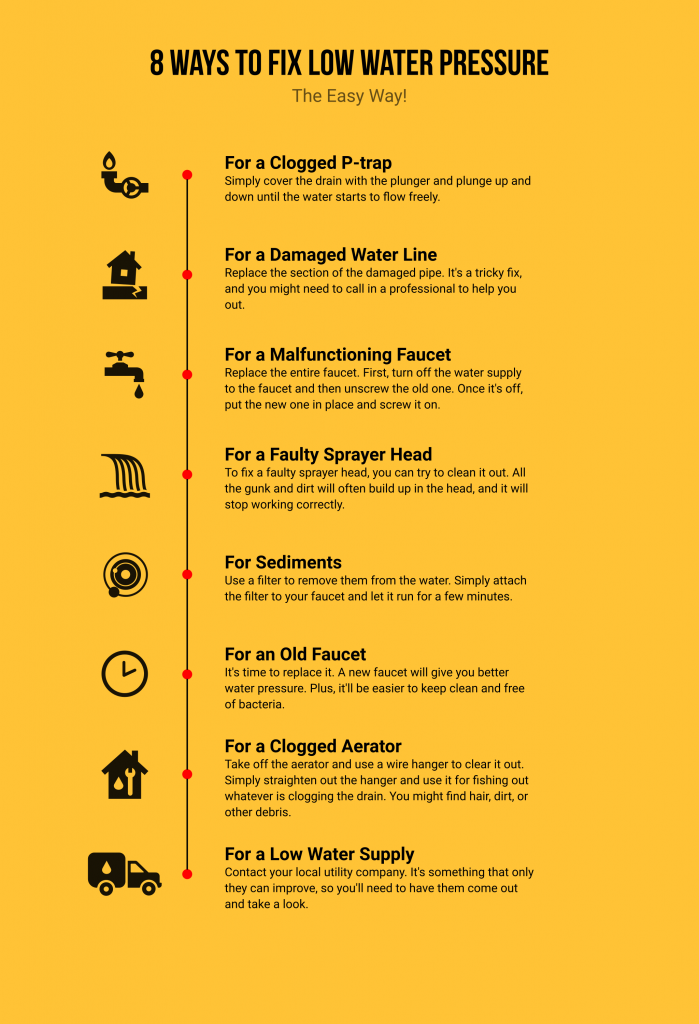Imagine stepping into your kitchen, eager to wash dishes or prepare a cup of tea, only to be met with a feeble stream of tepid water from the faucet. Low hot water pressure in kitchen sinks can be a common bugbear, putting a dampener on everyday chores and compromising comfort. But before you call a plumber, consider exploring the possible causes and solutions outlined in this comprehensive troubleshooting guide.

Image: cuthills.com
Investigating the Culprits
Various factors can contribute to diminished hot water pressure in kitchen sinks, including:
1. Sediment Buildup:
Over time, sediment from water sources can accumulate in the faucet aerator, restricting water flow. This can be exacerbated by hard water, which causes mineral deposits to form more readily.
2. Faulty Faucet Cartridge:
The faucet cartridge is a vital component responsible for controlling water flow and temperature. A defective cartridge can lead to reduced water pressure or fluctuating temperatures.

Image: ipipeline.net
3. Clogged Water Lines:
Sediment or other particles can also clog the water lines supplying the kitchen sink. This obstruction can impede water flow, resulting in low pressure.
4. Water Pressure Regulator Malfunction:
A water pressure regulator maintains a consistent water pressure throughout your home. If it malfunctions or becomes clogged, hot water pressure to the kitchen sink can be affected.
5. Broken Pipes:
In rare cases, a break in the hot water pipes under the sink or connecting to the faucet can cause reduced water flow and pressure.
Step-by-Step Troubleshooting
1. Check the Aerator:
Unscrew the aerator from the faucet and inspect it for any visible sediment or debris. Clean it thoroughly with vinegar or a dedicated aerator cleaning tool.
2. Replace the Faucet Cartridge:
If cleaning the aerator does not resolve the issue, consider replacing the faucet cartridge. Follow the manufacturer’s instructions carefully for removal and replacement.
3. Inspect the Water Lines:
Turn off the water supply and disconnect the water lines from the faucet. Inspect them for any kinks or clogs. Use a pipe cleaner to clear any obstructions.
4. Adjust the Water Pressure Regulator:
Locate the water pressure regulator, usually near the main water inlet, and adjust the pressure setting. Refer to the manufacturer’s guidelines for the recommended pressure range.
5. Call a Plumber:
If none of these DIY solutions restore hot water pressure, it’s advisable to contact a licensed plumber. They can diagnose any underlying issues, such as broken pipes or more complex problems, and provide professional repair services.
Prevention and Maintenance
1. Regular Cleaning:
Clean the faucet aerator and other fixtures regularly to prevent sediment buildup.
2. Water Softener:
Consider installing a water softener to reduce mineral deposits from hard water.
How To Fix Low Hot Water Pressure In Kitchen Sink
3. Water Filtration:
Use water filtration systems to remove impurities and reduce sediment that can clog the aerator and water lines.
By following these troubleshooting steps and preventive measures, you can effectively restore hot water pressure to your kitchen sink, ensuring a steady and satisfying flow for all your culinary and cleaning needs.